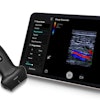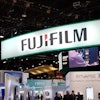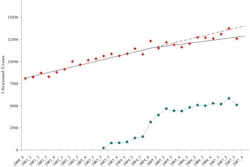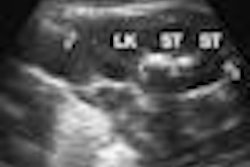ATLANTIC CITY, NJ - Ultrasound contrast agents have experienced a turbulent period in the U.S., thanks to an inability to achieve U.S. Food and Drug Administration (FDA) clearance for noncardiac applications and the agency's black box safety warning for cardiac products. But ultrasound contrast advocates believe that better days are ahead, expressing optimism that agents will be approved in the U.S. for radiology applications within the next few years.
"A lot of us have worked hard to raise the U.S. from a third-world country to its rightful place with Brazil and many other parts of the world that are developed when it comes to the use of ultrasound contrast agents," said Dr. Barry Goldberg of Thomas Jefferson University in Philadelphia. He discussed the future of ultrasound contrast in radiology during a talk at the Leading Edge in Diagnostic Ultrasound conference, held this week in Atlantic City.
Ultrasound contrast has traveled a long and winding road in the U.S. Numerous clinical trials were performed in the 1990s, and Mallinckrodt's Albunex agent was the first to receive clearance in 1994. It was approved only for use in echocardiography, however, and is no longer on the market.
Early clinical trials for ultrasound contrast in radiology applications were designed to compare its accuracy with the gold standard of contrast-enhanced CT (CECT). This approach proved problematic, however, due to difficulties in comparing contrast-enhanced ultrasound (CEUS) findings to CECT results, Goldberg said.
Two ultrasound contrast agents are currently being marketed in the U.S. for echocardiography applications: Definity (Lantheus Medical Imaging, North Billerica, MA), and Optison (GE Healthcare, Chalfont St. Giles, U.K.).
In 2007, the FDA approached the American Institute of Ultrasound in Medicine (AIUM) to request that the organization develop recommendations for future CEUS clinical trials. In response, the AIUM convened an ultrasound contrast agent task force consisting of physicians, engineers, and sonographers with extensive ultrasound contrast expertise, Goldberg said.
The task force developed an outline that described what they considered to be critical components of CEUS clinical trials. This report described appropriate end points for assessing ultrasound contrast agent efficacy in liver lesion characterization.
"The recommendations emphasized that CEUS should be compared to conventional noncontrast ultrasound imaging," Goldberg said.
Other recommendations were included to ensure uniformity between centers and enhance reproducibility of CEUS results. The FDA accepted the task force's concepts in principal, and in June 2007, the recommendations were published in the Journal of Ultrasound in Medicine.
The black box warning
Just as momentum seemed to be gathering, however, the FDA issued a black box safety warning in October 2007 for Definity and Optison that highlighted the risk of serious cardiopulmonary reactions within 30 minutes of contrast administration. The warning mandated a 30-minute monitoring period after ultrasound contrast administration in all patients, and listed multiple new contraindications.
Thanks to lobbying efforts, however, the FDA decided in May 2008 to relax the warning, removing a number of contraindications and recommending only that high-risk patients with pulmonary hypertension or unstable cardiopulmonary conditions be monitored within 30 minutes of administration. In June 2008, the FDA's Cardiovascular and Renal Drugs Advisory Committee met in Washington, DC, to review the safety record of the agents.
To continue to educate the FDA and the imaging community on the benefits and safety record of ultrasound contrast, a group of cardiologists, radiologists, and internists formed the International Contrast Ultrasound Society (ICUS). ICUS, which was formally launched in September 2008, aims to promote the safe and efficacious use of CEUS in patients with diverse medical profiles and disease states.
In other developments that bode well for the future of ultrasound contrast, recently published data have delineated toxic renal effects from the use of MRI contrast agents. In addition, issues are arising related to radiation exposure from today's advanced CT scanners, according to Goldberg.
Research examining the safety record of contrast echocardiography would indicate a 1:500,000 risk of death, a risk vastly lower than with comparable imaging modalities, Goldberg said.
Current status
Ultrasound contrast agents are approved today for general radiology applications in Europe, Asia, and many other regions around the world, Goldberg said. Investigations have proved that the use of CEUS for detecting and characterizing liver masses is at least equal to, if not better than, CECT. Numerous postapproval research studies have also shown that CEUS is more cost-effective and safer than CECT, Goldberg said.
Off-label use of contrast agents can be performed, and such use does not expose the radiologist or cardiologist to malpractice liability, Goldberg said. Reimbursement may be an issue, however.
"It should be noted that many [off-label] uses of gadolinium that are paid for now never went through formal FDA [review]," Goldberg said. "If you get enough articles that show usefulness, you can get approval."
As a result of the concerted and collaborative efforts by the AIUM, ICUS, and others, industry is taking a renewed interest in ultrasound contrast agents, Goldberg said.
Bracco of Milan, Italy, has received final FDA approval to begin a multicenter clinical trial in 2009 for its SonoVue agent, Goldberg said. The trial, which will include sites in the U.S. and Canada, will evaluate SonoVue's use in liver lesion characterization. Bracco aims to have SonoVue on the U.S. market by 2011.
As for the other ultrasound contrast vendors, Lantheus has also shown interest in seeking approval from the FDA for a noncardiac application for Definity, Goldberg said. In addition, GE has indicated that it is interested in moving forward with clinical trials designed to gain FDA clearance for noncardiac applications, he said. The time frame for these investigations has not been disclosed, however.
By Erik L. Ridley
AuntMinnie.com staff writer
May 21, 2009
Related Reading
CEUS of focal liver lesions in the noncirrhotic liver, May 19, 2009
Contrast ultrasound beats CT, PET in Hodgkin's lymphoma staging, May 6, 2009
Bracco revisits plans for U.S. launch of SonoVue, March 8, 2009
CEUS shines in complex cystic renal masses, October 3, 2008
New society aims to secure bright future for ultrasound contrast, September 25, 2008
Copyright © 2009 AuntMinnie.com




















